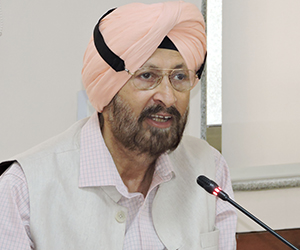Allegations of corruption in the VVIP helicopter deal have once again brought to the fore the fragility of India’s defence acquisition process. Corruption appears to be endemic in defence procurement and a structural overhaul is now necessary. India is expected to spend approximately USD 100 billion over the 12th and 13th defence plans on military modernisation. As 70 per cent of weapons and equipment are still imported, there is an urgent need to further refine the defence acquisition process and insulate it from the scourge of corruption. The Defence Procurement Procedure (DPP) being followed now was introduced in 2005. Since then it has been revised and modified several times based on the experience gained in its implementation. The current Defence Production Policy (DPrP) was unveiled in 2011. Its objectives are to: achieve self-reliance in the design, development and production of, weapons systems and equipment required for defence in an early time frame; create conditions conducive for the private sector to play an active role in this endeavour; enhance the potential of small and medium enterprises (SMEs) in indigenisation; and, broaden the defence research and development base of the country. While the objectives are laudable, the achievement of self-reliance remains in the realm of wishful thinking as most weapons and equipment continue to be imported, the defence PSUs have a stranglehold over contracts that are awarded to Indian companies and defence research and development is the monopoly of the DRDO.
Defence Research and Development
The Defence Research and Development Organisation (DRDO) has been conducting research at all levels of technology development – from the strategic to the mundane. It should actually concentrate its effort only in developing strategic technologies that no country will provide to India. The report of the P Rama Rao committee had reportedly asked the DRDO to identify eight to 10 critical areas which best suit its existing human resources, technical capability and established capacity to take up new projects. Since its inception in 1958, the DRDO has achieved some spectacular successes but also has many failures to its name. The successes include the Integrated Guided Missile Development Programme that produced the Prithvi and Agni series of ballistic missiles and, subsequently the BrahMos supersonic cruise missile in a collaborative venture with the Russians.
Among the failures are the main battle tank Arjun that took inordinately long to meet critical General Staff requirements of the Indian Army despite huge cost overruns. The LCA (light combat aircraft) still appears to be many years away from operational induction into the Indian Air Force. However, to DRDO’s credit, for many decades it worked under extremely restrictive technology denial regimes and with a rather low indigenous technology base. The time has come for the MoD to outsource defence R&D in non-critical areas to the private sector so as to encourage the development of indigenous technologies. In fact, funds should be allotted to the three Services for research aimed at product improvement during the life cycle of weapons systems and equipment.
Defence Procurement and Production Policies
The policy of self-reliance in defence production has not yielded the desired results. For several decades, the primary supplier of weapons systems was the Soviet Union and, later, Russia. If some MiG-21 aircraft and other weapons systems like tanks were produced in India, these were manufactured under license and no technology was ever transferred to India. The result was that even though India spent large sums of money on defence imports, India’s defence technology base remained very low.
The defence procurement and production policies (DPP and DPrP) continue to pay lip service to public-private partnerships and have so far failed to encourage India’s private sector to enter into defence production in a substantive manner – either on its own or through joint ventures (JVs) with multi-national corporations. The large-scale procurement of weapons and equipment from defence MNCs has been linked with 30 to 50 per cent “offsets”; that is, the company winning the order must procure 30 to 50 per cent components used in the system from within India. This will bring in much needed investment and will gradually result in the infusion of technology. However, the MNCs do not find the present level of 26 per cent FDI exciting enough. There is no credible reason why overseas equity investment cannot be raised to 49 per cent immediately for a JV to be really meaningful for a foreign investor.
As a growing economic powerhouse that also enjoys considerable buyer’s clout in the defence market, India should no longer be satisfied with a buyer-seller, patron-client relationship in its defence procurement planning. In all major acquisitions in future, India should insist on joint development, joint testing and trials, joint production, joint marketing and joint product improvement over the life cycle of the equipment. The US and other countries with advanced technologies will surely ask what India can bring to the table to demand participation as a co-equal partner. Besides capital and a production capacity that is becoming increasingly more sophisticated, India has its huge software pool to offer. Today software already comprises over 50 per cent of the total cost of a modern defence system. In the years ahead, this is expected to go up to almost 70 per cent as software costs increase and hardware production costs decline due to improvements in manufacturing processes.
Transparency in Decision Making
While the need for confidentiality in defence matters is understandable, defence acquisition decision making must be made far more transparent than it is at present, so that the temptation for supplier companies to bank on corrupt practices can me minimised. For example, tenders should be opened in front of the representatives of the companies that have bid for the contract. Before a contract is awarded, the file should be reviewed by the Chief Vigilance Commissioner (CVC). If the CVC has reservations about such scrutiny, either his charter should be amended or an eminent persons group should be appointed to vet large purchases. Surely, many such persons with unimpeachable integrity can be found in India.
In the past, the selective tweaking of the technical requirements during the procurement process has led to one company being favoured over another. All technical requirements must be frozen when a Request for Proposals (RfP) is issued by the MoD. It may seem heretical, but the conclusions contained in the reports of user trials must be made public. This step will not only amount to a huge leap forward in transparency, but also insulate the trials teams of the three Services from being unduly influenced to stage-manage trials in favour of any of the contending parties.
The frequent blacklisting of defence companies is having a deleterious effect on India’s military modernisation. Perhaps monetary penalties can be built into the contracts instead. The MoD must immediately undertake a structural overhaul of the defence procurement and production process. The aim should be to streamline it so that the armed forces get high quality weapons systems and equipment at competitive costs, preferably from indigenous suppliers. Soldiers must not be called upon to fight the nation’s enemies with inferior rifles made by the lowest bidder.
Published Date: 25th February 2013







.jpg)


Post new comment